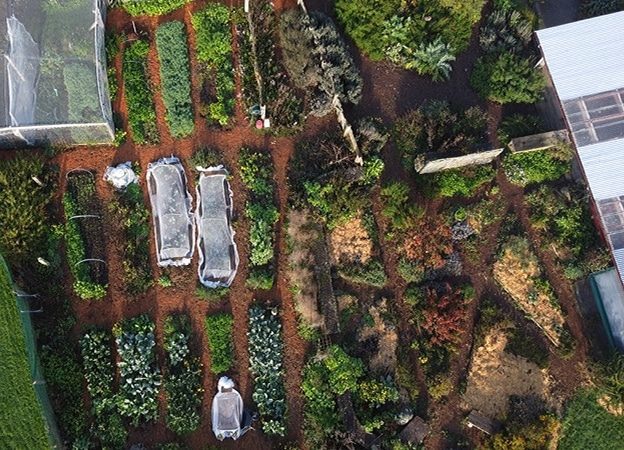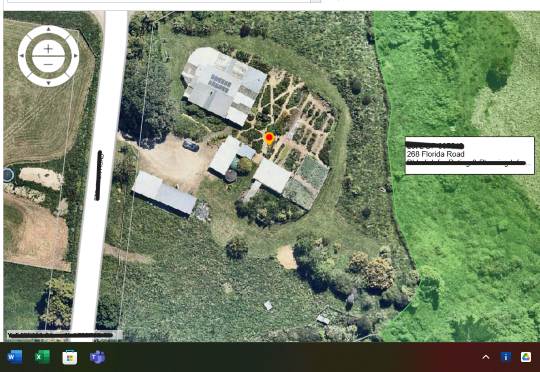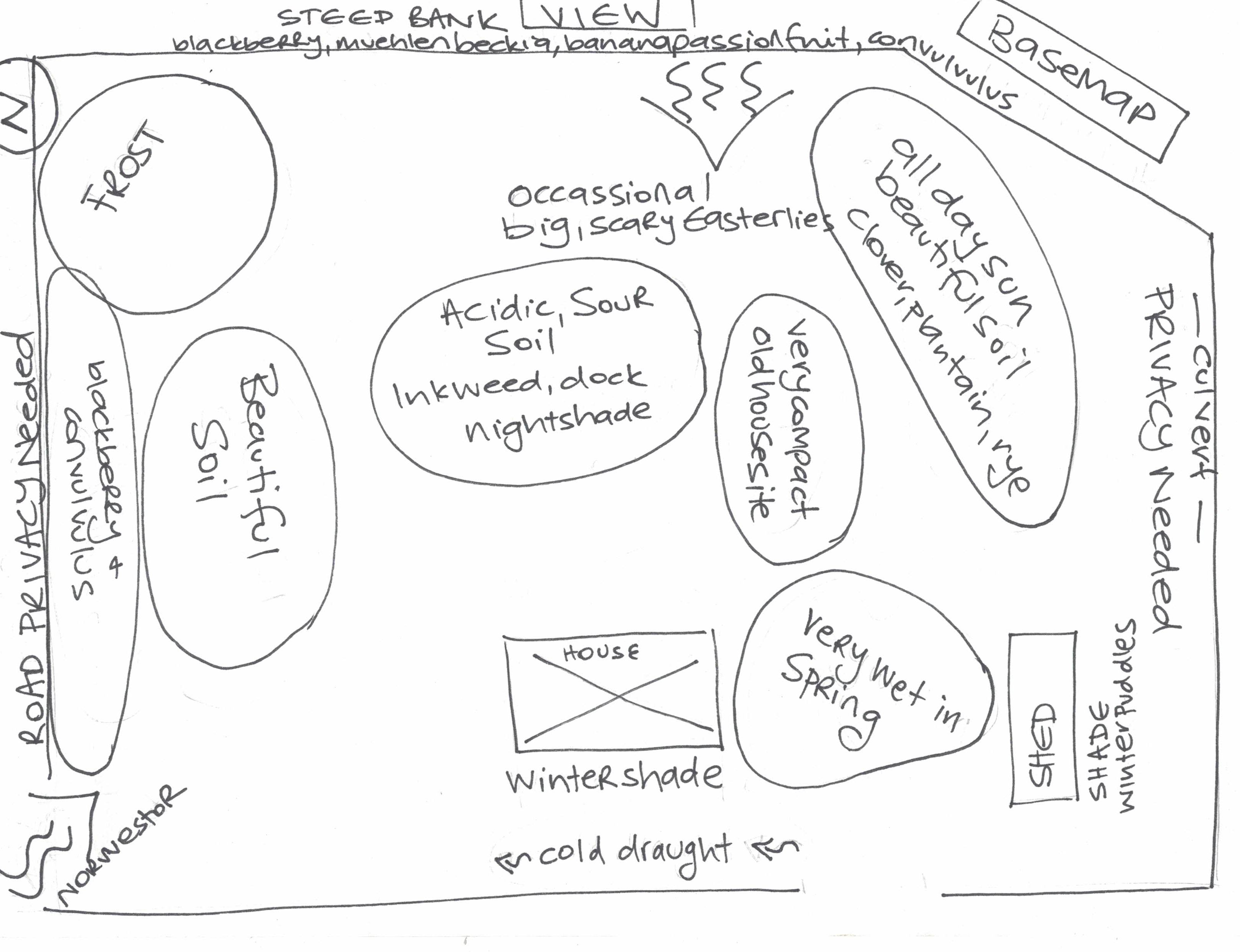Make a Basemap + Wishlist


Understanding your land and your climate first is key to you making sound placement choices.
"...protracted and thoughtful observation rather than protracted and thoughtless labour" Bill Mollison (co founder of permaculture) wisely advises.
Start by making a basemap - a birds eye view sketch or photo of your land. Use this to record essential info about your site as well as seasonal observations.
Make a basemap

Make your basemap A3 size so you have lots of room to record your observations. It's a good idea to create a couple.
Either hand draw one, or print off a copy of the aerial map of your place from your council website (or go into your council and get them to print it.)
Site observations
These are all the essentials that need to be marked on your basemap to save you making silly mistakes like planting tall trees beneath the overhead wires, or planting on top of the telephone cable or drainage field.
Start by drawing on north, then note or draw:
- overhead wires
- underground pipes and wires: water, electricity, telephone, sewage, stormwater, drainage pipes, irrigation systems.
- septic tank, septic field, and greywater field.
- all sources of water: outside taps, wells, bores, springs, streams, ponds, roofs without gutters, downpipes that aren't connected up, and overflows from tanks.
- slopes: low spots, high spots, walkable/workable slope, unwalkable/steep slope
- poorly drained places where surface water sits for extended periods. Is any of your land prone to flooding?
- and finally, but perhaps most importantly - get to know your soil. Do DIY soil tests in all the different zones - high, low, flat etc. Look up your soil type on an NZ soil map.
Seasonal observations

Leave your Basemap out - tack it to the wall or on the coffee table, so that its easy to add + subtract things, and to keep it alive in your mind!
You can gather the info for these 3 seasonal observations online:
- Frost. Does frost hang out at yours, and if it does, where does it sit? When is the first frost and when is the last?
- Rainfall. What’s the annual rainfall? What month is it driest? wettest?
- Temperatures: What are the low + high temperatures, and when they occur.
You can use an app like sun surveyor, to get to know the passage of the sun through the year. Esp winter sun, it's key knowledge for locating greenhouse, citrus and subtropicals.
- Sun. Get to know the path of the sun through all four seasons. Identify shady spots and sunny spots through each season - sunny spots in summer, may be shady in winter (no good for your lemon!) Sun is the driving energy of nature - you need to orient your food growing ventures to the light!
Water and wind need to be experienced though, because both are fluid and will respond to your unique site. Get outside!
- Wind. Learn the seasonal winds and the prevailing winds. Describe each wind as intimately as you can - which winds bring rain and which winds are cold? Which winds are strong? Find existing sheltered spots when each of the winds visit your place and draw them on your map. If your place is windy, every bit of existing shelter is valuable!
- Water. Where does surface water enter your land and where does it go? Get out in high rainfall events to track its path.
Make a wishlist
The fun bit - make a wishlist! This is a living list for adding to and subtracting from.
On a fresh bit of paper, jot down what you want to produce, your fav plants, the buildings and the animals you want to share your lives with - there's no commitment here, put it all down. Include on it your likes and dislikes, the vibe you want to create, and the way you wish to live your life - your garden can reflect all these things!
- Focus on the crops that are most important to you - this is especially wise if you are new to gardening, or working the land. Base your list on what you actually eat. It’s tempting to want to grow everything, but keep it basic - leafy greens, herbs and a lemon (if it suits your climate), are a strong beginning. Don't get too tricky.
- Exclude from your list the produce you can trade or buy - fruit/ vegies/ meat/ honey/ grains/ eggs. There's no need to slave away and do it all on your own. Check out local growers/ veggie swaps and community gardens.
